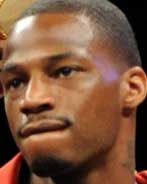Hauser on Jay Larkin: Goodbye to a friend

I met Jay Larkin in the 1990s when he was riding high as the driving force behind Showtime’s boxing program.
Jay wasn’t a typical television boxing executive. In his 20s, he’d played the lead in Hair and been part of Broadway productions like Sweeney Todd and Sunday in the Park with George. TV soap opera devotees might remember him from his roles on All My Children and The Doctors. He’d also sung in an a cappella doo-wop group.
I got to know Jay by writing about him. Then we became friends. In early 2007, he was diagnosed with a grade-4 glioblastoma. That’s an aggressive, fast-growing malignant brain tumor in its worst form. Survival rates depend on which study a patient looks at. Jay was told that 85 percent of the patients with a grade-4 glioblastoma are dead within a year.
Jay underwent surgery to remove the tumor at Columbia Presbyterian Hospital in New York. When I visited him there, I told him that he was going to live to be a crotchety old man and, by the time he was 80, I’d be one of the few people who liked him.
I honestly believed that Jay was going to make it. I suppose that was wish therapy on my part; also known as denial.
From that day on, Jay’s telephone calls to me often began with the salutation, “Hi, it’s the crotchety old man.”
In early 2009, the tumor returned in the form of “a small isolated nodule less than one centimeter in size.” Jay was accepted into an experimental vaccine program at Duke University Medical Center. For a while, the tumor grew smaller. Then it stabilized. Two months ago, an MRI revealed that it was burgeoning out of control. Absent a miracle in the most literal sense, there was no hope.
Last Tuesday (Aug. 3), I visited Jay at his home in Sparkill, N.Y. He and his wife Lisa wanted a video record of Jay’s time in boxing told from his point of view to pass on to their children. Jay was having good days and bad days by then. There was no guarantee that he’d hold up on camera. I asked Steve Farhood and Steve Albert if they’d like to come with me. Jay was particularly fond of both men and they’d been cornerstones of his years at Showtime. If he was unable to articulate during the interview, the three of us would carry the ball for him.
I hadn’t visited Jay for several months, so it was a shock to see him. His left side had been disabled by the tumor. He was in a wheelchair. He could push objects with his left hand but couldn’t lift them. He looked 20 years older than he did in June.
We started taping. Jay expressed his thoughts in a linear manner rather than the free flow of ideas that once characterized his thinking. But he was lucid. He told old war stories, including a few that we hadn’t heard before. He was in good spirits. I know I speak for Steve Farhood and Steve Albert when I say that it was a privilege to share those hours with him.
That night, Jay called to thank me. “Today was the first time in a long time that I had fun,” he said.
We talked one last time on Saturday. “I guess I won’t be a crotchety old man, after all,” he told me.
The war had been lost. All that remained was negotiating the final terms of surrender. On Sunday night, Jay suffered a massive brain hemorrhage. He died on Monday morning.
Most of us have frozen at the thought of death in moments when we focus with clarity on the fact that we won't always be here. All of us in moments of truth hope that something good will follow the life that we know. I don’t pretend to know what awaits us. I do know that Jay was a special friend and a thoroughly decent man. Good people will miss him.
Thomas Hauser can be reached by email at [email protected]
















